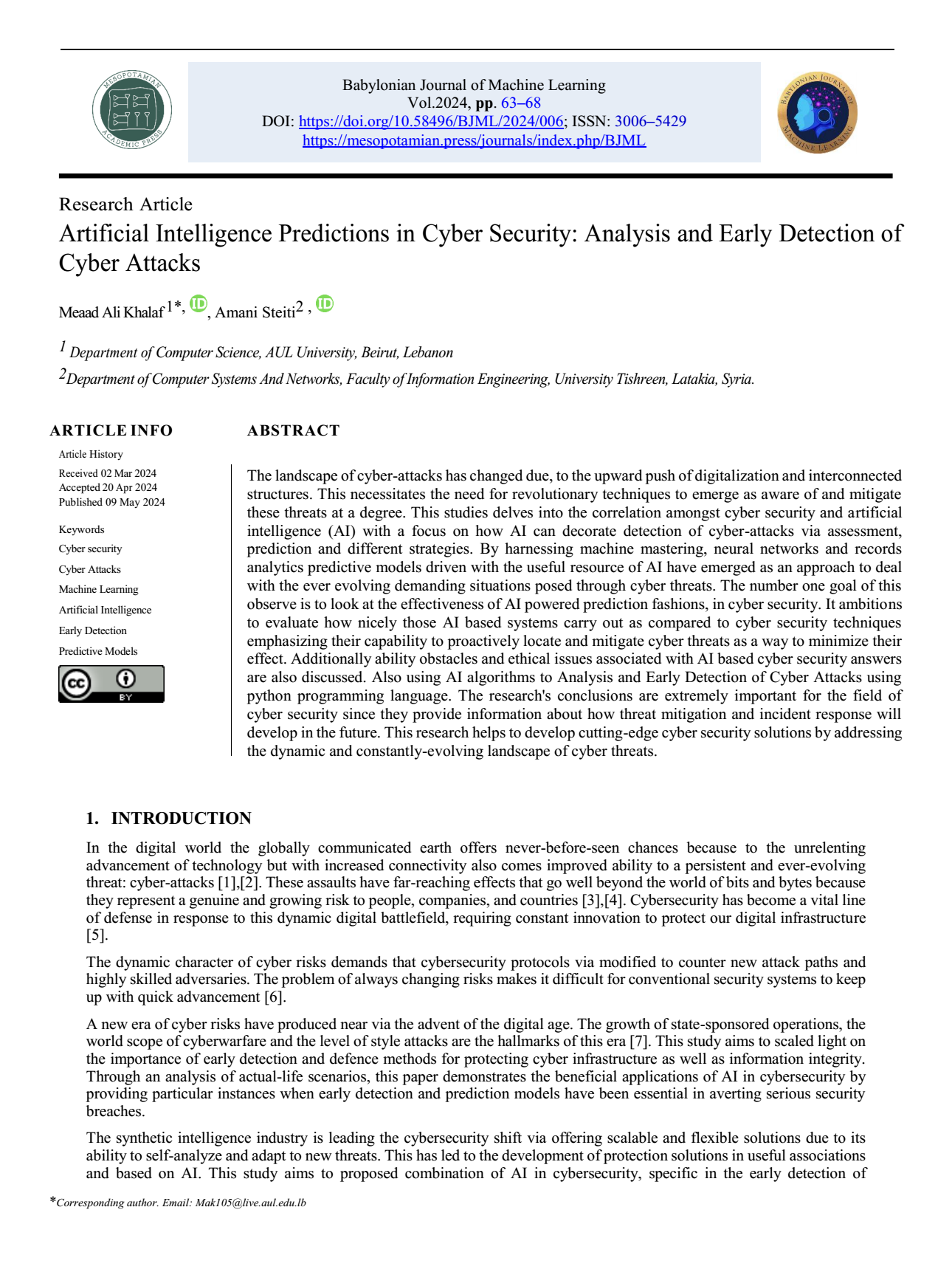Artificial Intelligence Predictions in Cyber Security: Analysis and Early Detection of Cyber Attacks
Main Article Content
Abstract
The landscape of cyber-attacks has changed due, to the upward push of digitalization and interconnected structures. This necessitates the need for revolutionary techniques to emerge as aware of and mitigate these threats at a degree. This studies delves into the correlation amongst cyber security and artificial intelligence (AI) with a focus on how AI can decorate detection of cyber-attacks via assessment, prediction and different strategies. By harnessing machine mastering, neural networks and records analytics predictive models driven with the useful resource of AI have emerged as an approach to deal with the ever evolving demanding situations posed through cyber threats. The number one goal of this observe is to look at the effectiveness of AI powered prediction fashions, in cyber security. It ambitions to evaluate how nicely those AI based systems carry out as compared to cyber security techniques emphasizing their capability to proactively locate and mitigate cyber threats as a way to minimize their effect. Additionally ability obstacles and ethical issues associated with AI based cyber security answers are also discussed. Also using AI algorithms to Analysis and Early Detection of Cyber Attacks using python programming language. The research's conclusions are extremely important for the field of cyber security since they provide information about how threat mitigation and incident response will develop in the future. This research helps to develop cutting-edge cyber security solutions by addressing the dynamic and constantly-evolving landscape of cyber threats.
Article Details
Issue
Section

This work is licensed under a Creative Commons Attribution 4.0 International License.
Deprecated: json_decode(): Passing null to parameter #1 ($json) of type string is deprecated in /home/u273879158/domains/mesopotamian.press/public_html/journals/plugins/generic/citations/CitationsPlugin.php on line 68
